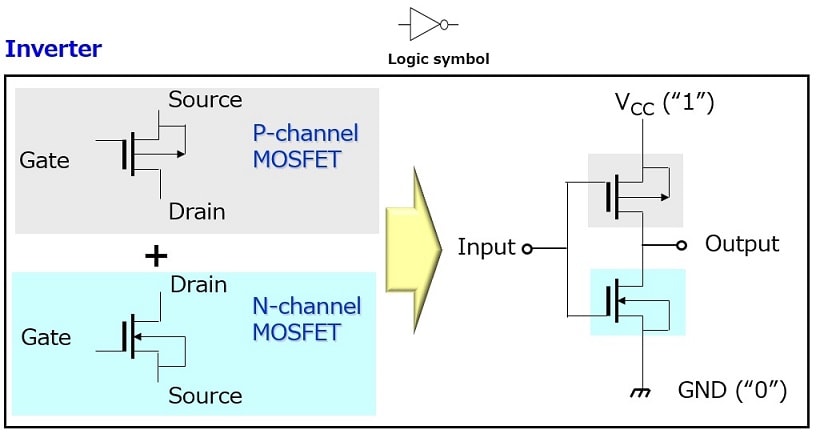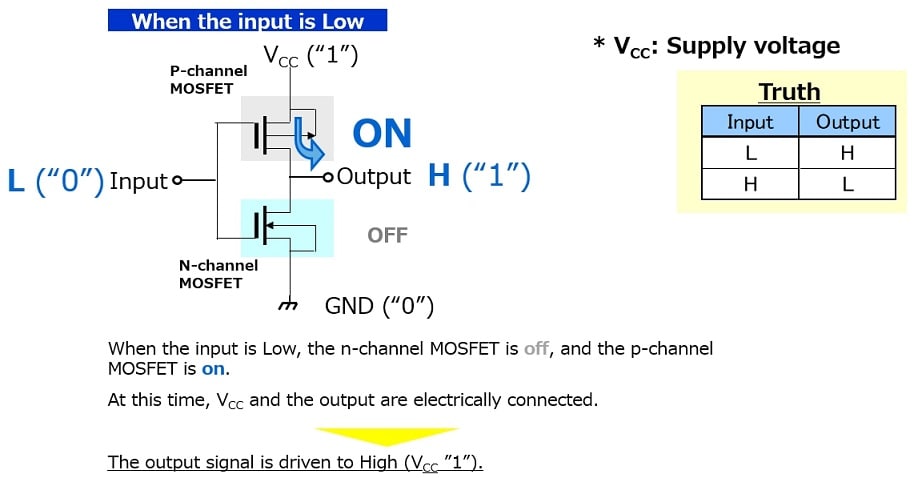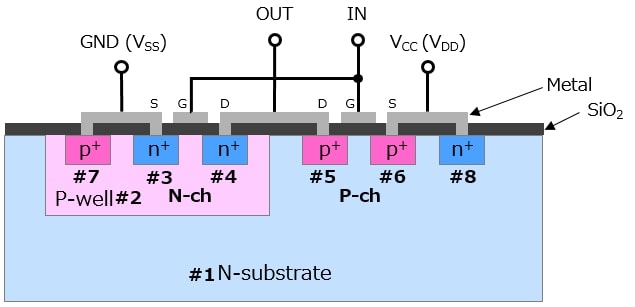- General Top
- SEMICONDUCTOR
- STORAGE
- COMPANY
-
My ToshibaSemicon
- Semiconductor Top
-
ApplicationsAutomotive
Body Electronics
xEV
In-Vehicle Infotainment
Advanced Driver-Assistance Systems (ADAS)
Chassis
IndustrialInfrastructure
BEMS/HEMS
Factory Automation
Commercial Equipment
Consumer/PersonalIoT Equipment
Healthcare
Wearable Device
Mobile
Computer Peripherals
-
ProductsAutomotive Devices
Discrete Semiconductor
Diodes
Transistors
Logic ICs
Analog Devices
Digital Devices
Wireless Devices
※
: Products list (parametric search)
Power SemiconductorsSiC Power Devices
※
: Products list (parametric search)
Isolators/Solid State RelaysPhotocouplers
Digital Isolators
Solid State Relays
Fiber Optic Transmitting Modules
※
: Products list (parametric search)
MOSFETsIGBTs/IEGTsBipolar Transistors※
: Products list (parametric search)
Diodes※
: Products list (parametric search)
MicrocontrollersMotor Driver ICsIntelligent Power ICs※
: Products list (parametric search)
Power Management ICsLinear ICs※
: Products list (parametric search)
General Purpose Logic ICsLinear Image SensorsOther Product ICsOther Product ICs
※
: Products list (parametric search)
-
Design & Development
Design & Development
Innovation Centre
At the Toshiba Innovation Centre we constantly strive to inspire you with our technologies and solutions. Discover how to place us at the heart of your innovations.
-
Knowledge
Knowledge
Highlighted Topics
Further Materials
Other
- Where To Buy
- Part Number & Keyword Search
- Cross Reference Search
- Parametric Search
- Stock Check & Purchase
This webpage doesn't work with Internet Explorer. Please use the latest version of Google Chrome, Microsoft Edge, Mozilla Firefox or Safari.
require 3 characters or more. Search for multiple part numbers fromhere.
The information presented in this cross reference is based on TOSHIBA's selection criteria and should be treated as a suggestion only. Please carefully review the latest versions of all relevant information on the TOSHIBA products, including without limitation data sheets and validate all operating parameters of the TOSHIBA products to ensure that the suggested TOSHIBA products are truly compatible with your design and application.Please note that this cross reference is based on TOSHIBA's estimate of compatibility with other manufacturers' products, based on other manufacturers' published data, at the time the data was collected.TOSHIBA is not responsible for any incorrect or incomplete information. Information is subject to change at any time without notice.
require 3 characters or more.
Basic Operations of CMOS Logic ICs
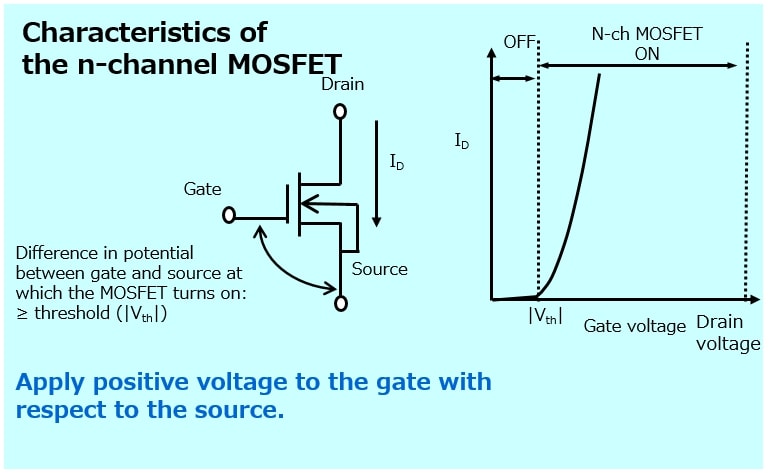
When the gate-source voltage of a MOSFET exceeds a certain voltage (threshold voltage, |Vth|), the drain-source resistance decreases, causing the MOSFET to turn on. This drain-source resistance is called on-resistance.
The direction of the voltage applied across gate and source differs between n-channel and p-channel MOSFETs. The following figure shows the condition under which a MOSFET turns on.
N-channel MOSFET: When the gate voltage is higher than the source voltage by |Vth|, the n-channel MOSFET turns on.
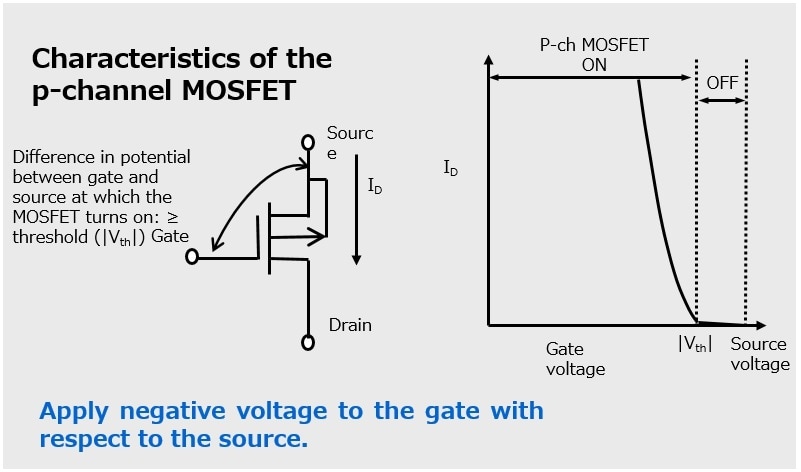
P-channel MOSFET: When the gate voltage is lower than the source voltage by |Vth|, the p-channel MOSFET turns on.

The following figure shows an inverter, a basic building block of CMOS logic ICs.
When VIN is at the VCC or GND level, either the p-channel or n-channel MOSFET is off. Therefore, very little current (ICC) flows between VCC and GND. When the input is in the steady state (at the VCC or GND level), ICC is very low.
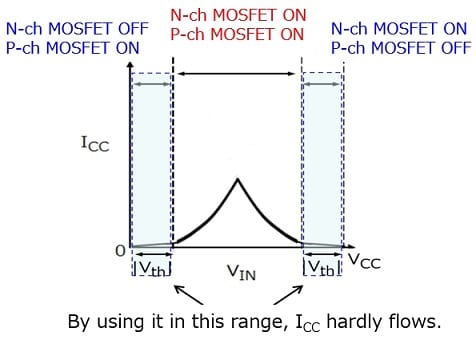
The following figure shows the VIN-ICC curve of CMOS.
When VIN is between 0and |Vth| or between VCC-|Vth| and VCC, very little current (ICC) flows between VCC and GND. However, when VIN is between |Vth| and VCC-|Vth|, shoot-through current flows from the p-channel MOSFET to the n-channel MOSFET, increasing ICC. Therefore, care should be exercised to ensure that excessively slowly changing input is not applied to VIN.
Chapter2 Basic Operations of CMOS Logic ICs
Products
Related information
- Application Notes
- FAQ


